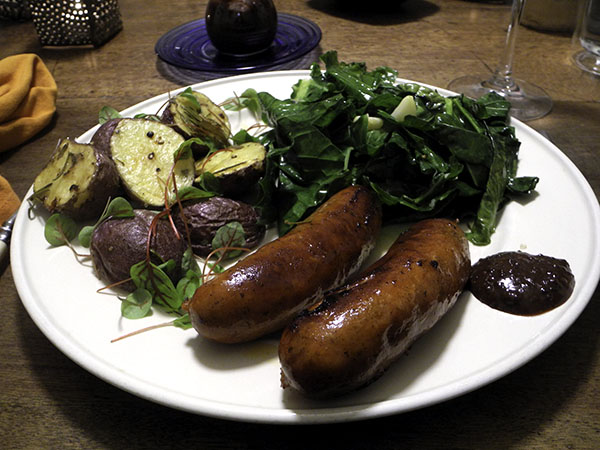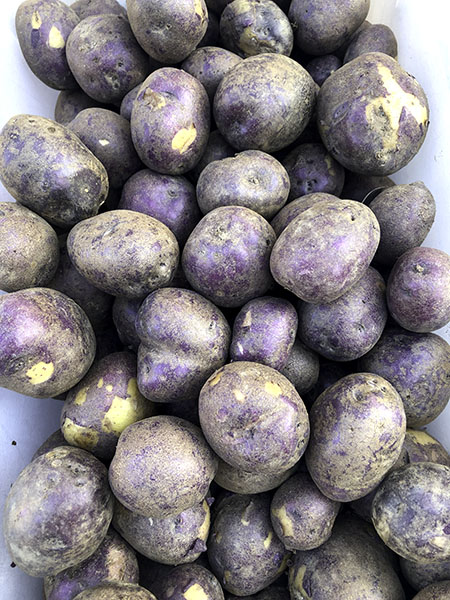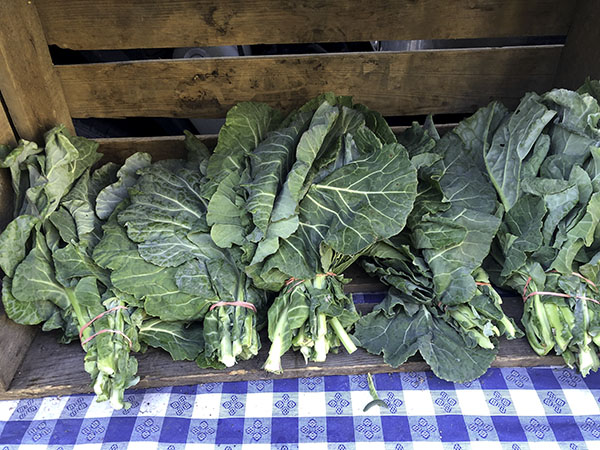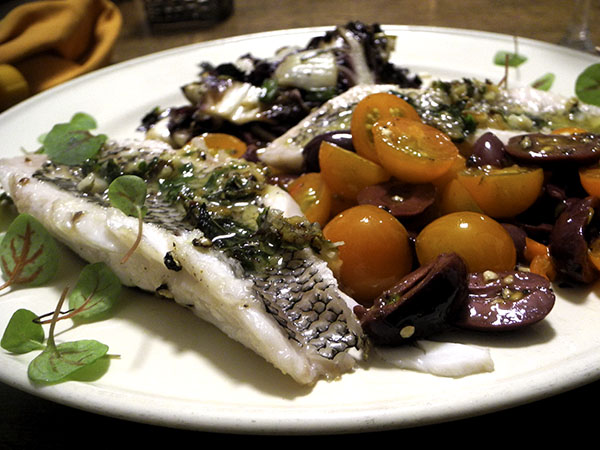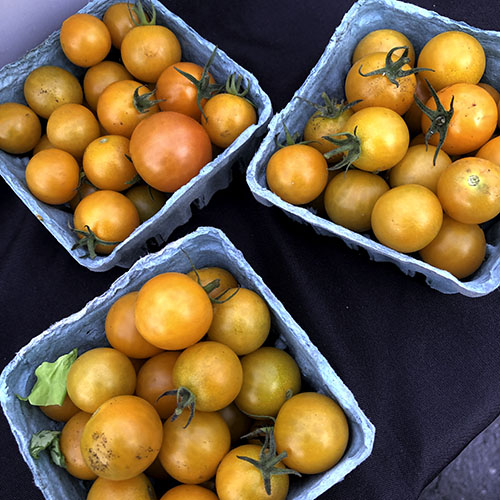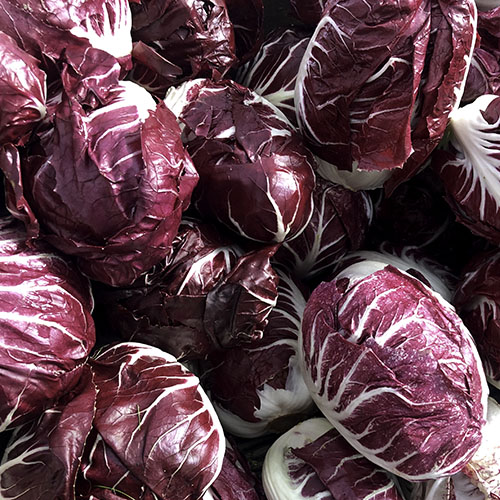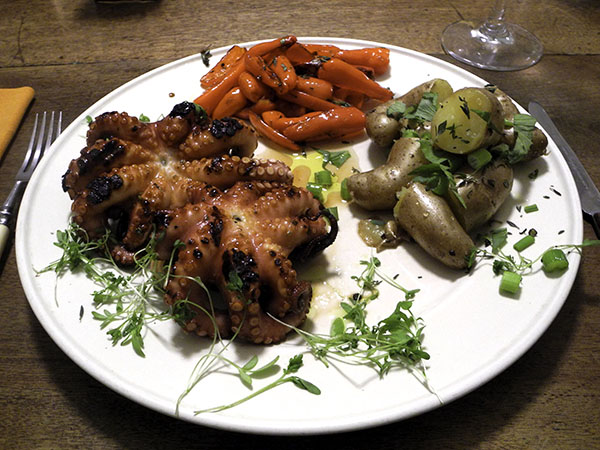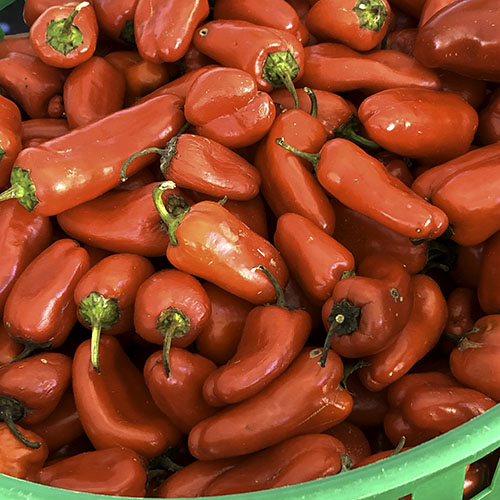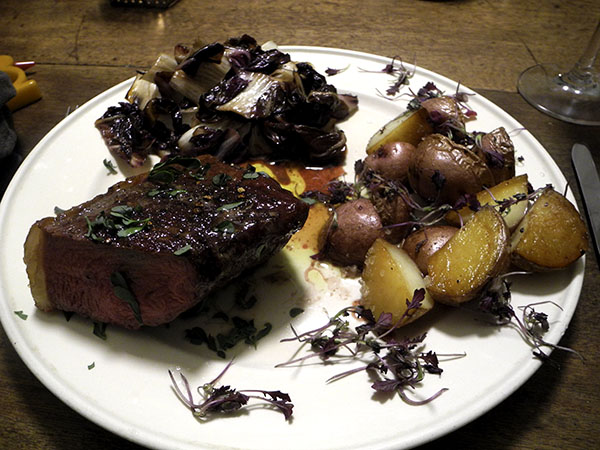
Looks aren’t everything.
The proof of the pudding is in the eating.
Good things come in threes.
Red is good.
I mean, to me the the picture looks good, and at least to anyone who might enjoy the kind of dinner it describes, it’s probably a fairly appetizing image.
What it doesn’t show however is just how really, really delicious the entire meal actually was, and the steak in particular. Last night I said that I’ve never had a better one, at home or in a restaurant, and Barry agreed.
All of the elements of the meal were familiar recipes, and proven favorites as well, but because I was altering the way I cook one of them, the steak, using a ‘reverse sear method’ for the first time [its merits discussed here], a certain amount of recalculation was required for all 3 parts of the dinner.
The recipe for the potatoes is brilliant, and I’m sure to be revisiting it under similar circumstances, in warm weather when I don’t want to use an oven, or when I might just some delicious stove-top roasted potatoes.
I was planning to have roasted potatoes last night (I had some nice La Ratte fingerlings in my virtual root cellar), and I would normally have preferred roasting the radicchio with some thyme branches, but the oven both would need was going to be engaged with the steak at too low a temperature for either of the vegetables until shortly before the meal would be completed. I realized this at just about the time I was to begin the preparation of the meal, so I quickly searched on line for a recipe that would produce a potato dish more appropriate for accompanying a good steak than simple boiled potatoes (finding an excellent one here, from Amanda Hesser‘s site, Food52), and I revised the plan for the chicory, moving the cooking to a burner top and also totally simplifying its preparation.
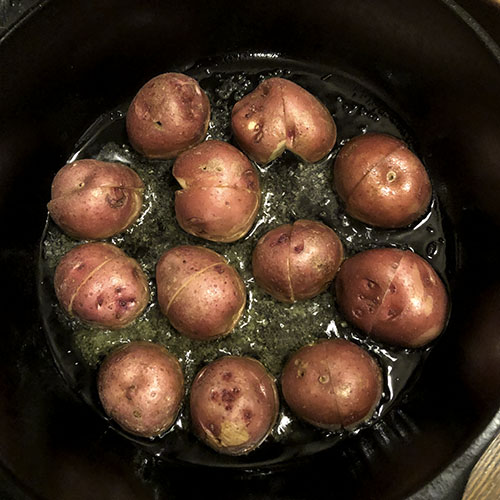
They may not have looked like roasted potatoes when they started out, but if I hadn’t been there all through the process, they could have fooled me once they were done.
- one 19-ounce picanha steak (called ‘culotte’ here, ‘coulotte’ in France, ‘picanha’ in Brazil), from Gabe, of Sun Fed Beef (Maple Avenue Farms) in the farm’s stall at the Union Square Greenmarket, brought to room temperature, seasoned on all sides with sea salt and freshly-ground black pepper, placed on a rack in, as I’m suggesting now, a 275º oven for 15 or 20 minutes [that timing estimate will have to be examined the next time, since last night I used an even lower temperature, for a longer period, but the cooking didn’t seem to be actually happening, so I eventually raised the heat], or until medium rare, meaning a thermometer reading of 120º, then seared briefly on all sides (the steak was already fully cooked, so left on the surface just long enough to impart color, lingering just a bit longer on the top, thick, fat-covered side) inside a dry oval heavy cast iron pan, after first placing on the surface a little cooking oil with a higher smoke point than olive oil (I used Mac Nut macademia nut oil from Whole Foods Market) and immediately applying pressure in the center with a wooden spoon, to keep its middle surface from rising from the surface of the pan, then removed from the heat, cut into 2 sections, and allowed to rest for up to 10 minutes while covered loosely with foil, arranged on 2 warm plates, some juice from an organic Whole Foods Market organic lemon squeezed on top, sprinkled with chopped fresh rue from Stokes Farm, and drizzled with a Whole Foods Market Portuguese house olive oil
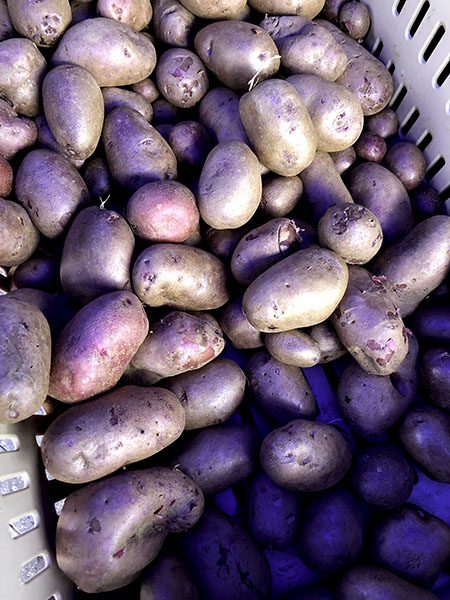
- eleven or 12 ounces of small Adirondack Red potatoes from Norwich Meadows Farm, each less than 2 inches in size, scrubbed, halved, and set aside while a large antique, very well seasoned Wagner Ware cast iron pan in which enough olive oil had been added to coat the bottom 1/8 inch deep was heated over a medium flame until the oil began to shimmer, a generous layer of salt [but not too much] scattered into the oil all over the bottom of the pan as evenly as possible, the potatoes, the pieces of the second cut kept together so the potatoes look like just one half, placed cut side down on the bottom of the pan and fried at medium heat, without touching, for about 10 minutes, depending on the size of the potatoes, at which time one potato half was turned over and checked to see if it was nicely colored (if not, the cooking would be allowed to continue a few more minutes), and when the potatoes were nicely browned, the heat was turned as low as possible and a glass cover placed on the pan, with the potatoes continuing to brown under cover, for about 20 minutes more, or until done, when they were seasoned with black pepper, arranged on the plates, and garnished with micro kale from Norwich Meadows Farm [the potatoes can be kept covered with the heat off, for 30 minutes or more, but if they are allowed to stand, any excess oil should be drained from the pan [they are equally good at room temperature]
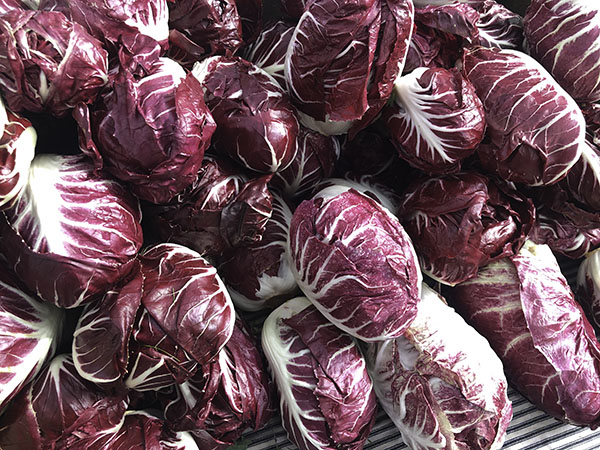
- the outer leaves, about 11 ounces by weight, from one 17-ounce head of rosa di verona radicchio (the oldest red chicory, and still the classic, although these were not round, but somewhat elongated, from Campo Rosso Farm, washed and drained, cut very roughly, sautéed in a little olive oil inside a large antique copper pot over medium-high heat, stirring frequently, until tender to the bite and starting to brown just a bit, or maybe 6 to 8 minutes, sprinkle with salt and black pepper, arranged on the plates, drizzled with a little more olive oil [as with the potatoes, timing is really not very critical, as the chicory can be serves warm or at room temperature]
- the wine was an Italian (Tuscany/Castiglioni) red, Tenuta Frescobaldi di Castiglioni 2017,from Philippe Wines
- the music was Mahler’s Symphony No. 6, Claudio Abbado conducting the Berlin Philharmonic Orchestra
